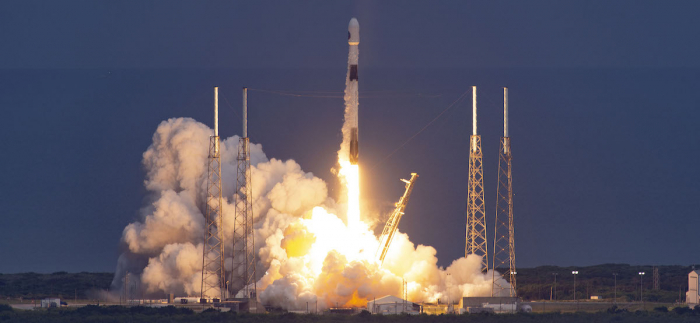By mid-morning, SpaceX had already canceled one launch from Florida, a mission carrying five dozen Starlink satellites. But the company held out hope for getting the second flight of a planned doubleheader off on Sunday evening, and by the time the clock ticked down on the SAOCOM-1B mission, weather conditions began to marginally improve.
At 7:18 pm ET (23:18 UTC) launch-site weather had only just turned green, so a thrice-used Falcon 9 first stage took off on its fourth flight. And a historic one it was as SpaceX launched a rocket for the 100th time, and flew a rare polar corridor mission from Florida for Argentina's space agency.
The century mark
SpaceX launched its first rocket in March, 2006. This was the small Falcon 1 rocket, which failed about half a minute into flight after its single Merlin engine caught on fire. After two more failed attempts SpaceX would reach orbit on September 28, 2008, with the Falcon 1 rocket.
The company then turned its attention toward developing the larger Falcon 9 rocket, which flew in 2010 for the first time. SpaceX launched its 10th overall mission in March, 2013.
Since then there has been an acceleration in launch cadence has SpaceX has developed five versions of its Falcon 9 rocket and the Falcon Heavy booster. The company required seven years to go from its first to its tenth launch. In seven more years SpaceX has gone from its 10th launch to its 100th.
Polar corridor
Sunday's mission also represented the first time a rocket has launched from Florida—which is optimized for equatorial launches—into a polar orbit in 50 years. The last polar mission came in 1969, with a weather satellite launched for a forerunner of NOAA called the Environmental Science Services Administration.
A "polar" mission simply means that a rocket inserts a satellite into an orbit that passes over the poles rather than going around the earth following the equator. Most rockets bound for polar orbits launch from spaceports with north or south-facing corridors, such as Vandenberg Air Force Base in California.
The primary challenge of flying a polar mission from Florida is the potential fly over land. To reach orbit safely, the Falcon 9 rocket launched Sunday performed a "dog-leg" maneuver to the east to skirt the southeastern coast of Florida. Although the rocket's second stage eventually did fly over Cuba, SpaceX and the 45th Space Wing determined there was no danger to the island nation given the second stage's altitude.
More about: #SpaceX
















































